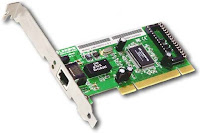Tugas AIJ Cisco 6.2.2.4 Packet Tracer
Hai semua nya,
Perkenalkan nama saya Immanuel Ananda Putra dari XI TKJ A. di postingan kali ini saya akan mengulas kembali apa yang telah saya pelajari pada mata pelajaran Administrasi Infrastruktur Jaringan ( AIJ ).
Soal
Part 1: Examine the Network and Evaluate the Need for Static Routing
a. Looking at the topology diagram, how many networks are there in total? 5
b. How many networks are directly connected to R1, R2, and R3? R1 = 2, R2 = 3, and R3 = 2.
c. How many static routes are required by each router to reach networks that are not directly connected? R1 membutuhkan 3 static routes, R2 membutuhkan 2 static routes, and R3 membutuhkan 3 static routes
d. Test connectivity to the R2 and R3 LANs by pinging PC2 and PC3 from PC1.
Why were you unsuccessful? Karena tidak ada rute ke jaringan tersebut di R1
Part 2: Configure Static and Default Routes
Step 1: Configure recursive static routes on R1.
a. What is recursive static route? A recursive static route relies on the next hop router in order for packets to be sent to its destination. A recursive static route requires two routing table lookups.
b. Why does a recursive static route require two routing table lookups? It must first look in the routing table for the destination network and then look up the exit interface/direction of the network for the next hop router.
c. Configure a recursive static route to every network not directly connected to R1, including the WAN link between R2 and R3.
R1(config)#ip route 172.31.0.0 255.255.255.0 172.31.1.193
R1(config)#ip route 172.31.1.196 255.255.255.252 172.31.1.193
R1(config)#ip route 172.31.1.128 255.255.255.192 172.31.1.193
d. Test connectivity to the R2 LAN and ping the IP addresses of PC2 and PC3.
Why were you unsuccessful? R1 has a route to the R2 and R3 LANs, but R2 and R3 do not have a routes to R1
Step 2: Configure directly attached static routes on R2.
a. How does a directly attached static route differ from a recursive static route? A directly attached static route relies on its exit interface in order for packets to be sent to its destination, while a recursive static route uses the IP address of the next hop router.
b. Configure a directly attached static route from R2 to every network not directly connected.
R2(config)#ip route 172.31.1.0 255.255.255.128 Serial 0/0/0
R2(config)#ip route 172.31.1.128 255.255.255.192 Serial0/0/1
c. Which command only displays directly connected networks? #show ip route connected
d. Which command only displays the static routes listed in the routing table? #show ip route static
e. When viewing the entire routing table, how can you distinguish between a directly attached static route and a directly connected network? The static route has an S and a directly connected network has a C
Step 3: Configure a default route on R3.
a. How does a default route differ from a regular static route? A default route, also known as the gateway of last resort, is the network route used by a router when no other known route exists for a destination network. A static route is used to route traffic to a specific network
b. Configure a default route on R3 so that every network not directly connected is reachable.
R3(config)#ip route 0.0.0.0 0.0.0.0 Serial0/0/1
c. How is a static route displayed in the routing table? R3(config)#ip route 0.0.0.0 0.0.0.0 Serial0/0/1
Step 4: Document the commands for fully specified routes.
a. Explain a fully specified route. A fully specified route is a static route that is configured with an exit interface and the next hop address
b. Which command provides a fully specified static route from R3 to the R2 LAN?
R3(config)# ip route 172.31.0.0 255.255.255.0 s0/0/1 172.31.1.197
c. Write a fully specified route from R3 to the network between R2 and R1. Do not configure the route just calculate it.
R3(config)# ip route 172.31.1.192 255.255.255.252 s0/0/1 172.31.1.197
d. Write a fully specified static route from R3 to the R1 LAN. Do not configure the route; just calculate it
R3(config)# ip route 172.31.1.0 255.255.255.128 s0/0/1 172.31.1.197
Step 5: Verify static route configurations.
Use the appropriate show commands to verify correct configurations.
Which show commands can you use to verify that the static routes are configured correctly?
show ip route, show ip route static, and the show ip route [network] commands






Komentar
Posting Komentar